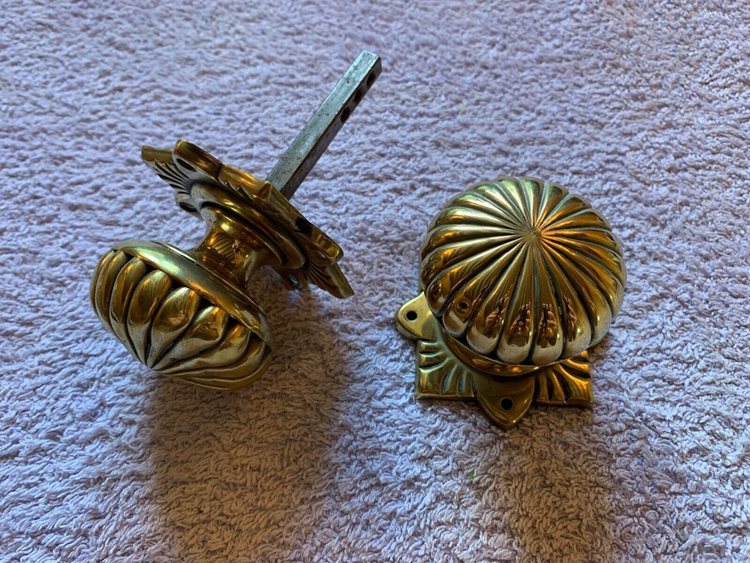
Antique doorknobs, whether made of stamped metal, painted porcelain, or cut crystal, provide an air of antiquity to any home or company. Because these doorknobs may be reused in modern contexts, they appeal to a broader audience than simply vintage lovers.
Take a look at how antique doorknobs evolved through time and where you can get one now if you want to remodel an old farmhouse or learn more about your grandparents’ property.
Have you been looking at your doorknobs and thinking they could be antique?
Do you know what the qualities of an antique doorknob are? Do you want to discover the value of antique doorknobs?
Table of Contents
What Did People Use Before Door Handle?
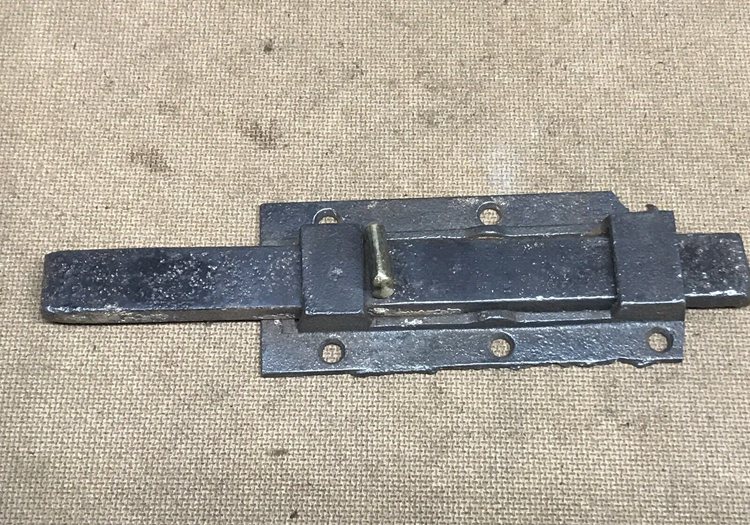
People used a bolt or a lock to keep a door shut before door knobs and handles were designed. A lock and key were only available to the rich.
The majority of people used a latch string, which included drilling a tiny hole in the door and putting a leather thong or string through, which was then wrapped around a wooden bar.
Architecture is one of the most imposing and pervasive forms of art. It’s hard to avoid coming into touch with physical buildings, which are frequently designed to appeal to numerous senses.
However, while being surrounded by structures and living in them, how frequently do we interact with architecture?
The doorknob has been one of the few parts of structures constructed with the express aim of touching for ages.
Doorknobs may be underdocumented design features due to their unique haptic connection between buildings and humans. However, they have a history as long as buildings, and hence, doors.
Ancient Beginnings (4,000 BC)
Doorknobs have existed for as long as doors have existed, even if they were not always complex. Keys first appeared in Ancient Egypt and Babylon some 6,000 years ago as crude wooden devices.
As a result, old doors had a tiny hole in the door that served as a doorknob. People had to insert a leather thong or piece of thread or cord and loop it around the bar to use it.
There was little innovation in keys and door hardware during the Ancient and Medieval periods. Despite the fact that castles and noble houses had a handcrafted glass or iron doorknobs, secured residences were a luxury few could afford.
For example, in certain nations, such as the United Kingdom or Denmark, a chamberlain was in charge of protecting the homes and belongings of aristocratic families since locks and doors were heavy and cumbersome.
The Very First Locking Door Knob
In 1878, an African American inventor named Osborn Dorsey received the first patent for a doorknob and internal door-latching mechanism.
In the United Kingdom, locksmiths Robert Barron, Joseph Bramah, and Jeremiah Chubb collaborated on the creation of contemporary lever tumbler locks. In 1818, Chubb patented his lock.
Watch the video below for a better understanding!
Decoration Door Furniture
Door knob and door handle styles moved from practical to beautiful with the Industrial Revolution and the availability of varied materials.
The variety of designs developed in accordance with interior design trends, incorporating movements such as Art Deco, Minimalist, and a return to previous period styles such as Tudor and Georgian.
Patenting the Modern Doorknob in 1848
Manufacturing increased with the industrial revolution, and households began to become affluent.
This not only increased demand for personal protection but also prepared the path for current doorknobs to be mass-produced.
In 1848, Osbourn Dorsey, a 16-year-old African-American inventor, received a patent for the first modern doorknob and doorstoppers.
Doorknobs in the Twenty-First Century and Beyond
Dorsey’s innovation was not the first doorknob, but it was the first recorded patent that could be manufactured. The technology swiftly swept throughout the industrialized world — and the world of access was never the same again.
Architects and designers use doorknobs to reflect the message and character of a building by employing different forms, materials, or colors.
Bauhaus or Rococo style doorknobs, for example, not only enhance the design but also capture the cultural mood.
Access systems, on the other hand, are growing more complicated and sophisticated as digital technologies evolve. Doorknobs are already obsolete in certain circumstances, such as revolving doors or hands-free entry.
However, no matter which way they change in the future, the way people enter a building will always teach future historians a great lot about our cultures and society.
Famous Doorknob Manufacturers
Many antique doorknob manufacturers gained popularity throughout the Victorian era and beyond. The Antique Doorknob Collectors of America offer some insight into the niche’s popular businesses.
Russell and Erwin
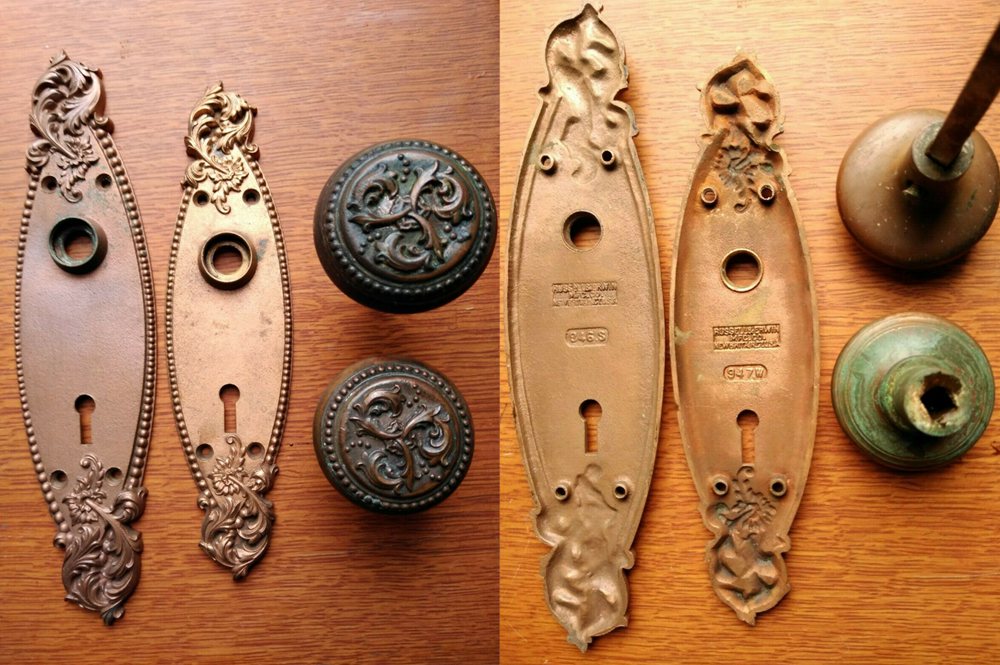
Russell and Erwin was the first firm, and they sold door hardware such as padlocks, locks, and door accessories. This company’s antique doorknobs have sold for much over £175.
They are an American firm that began trading under its current name in 1849, rose to prominence in the 1870s, and is still in operation today. People collect doorknobs manufactured by the firm as historical artifacts.
Yale and Towne
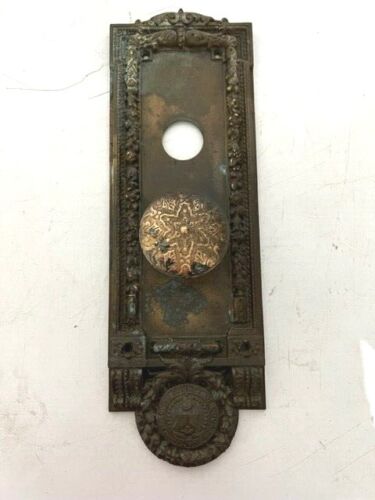
Yale and Towne is another well-known producer of vintage doorknobs. Linus Yale founded the firm in 1868 as a lock business, and the inclusion of Henry Towne as a partner transformed it into prominent hardware business.
Sargent
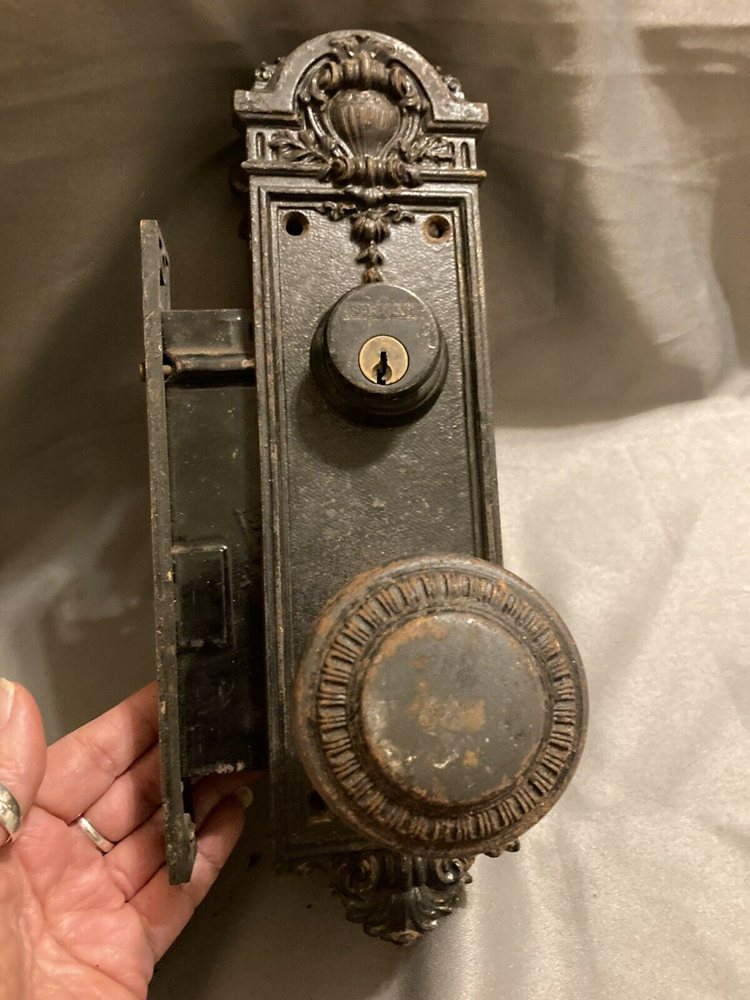
Sargent is another well-known firm that manufactured doorknobs that are still in use today. They started by making locks and other hardware for buildings and doors in 1857. Antique doorknobs and locks have sold for more than £200.
Corbin Russwin
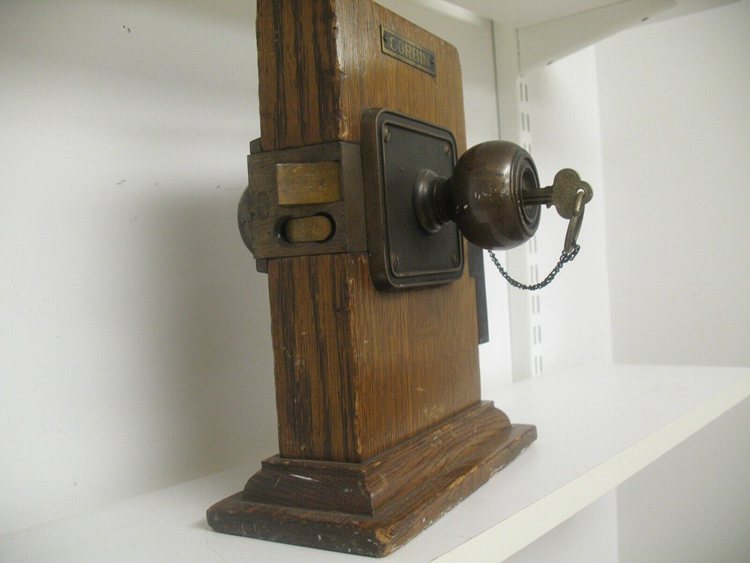
Corbin Russwin is a firm that was founded in 1849 and is well-known for making high-quality vintage doorknobs. The company began by making and selling plate locks before expanding into other hardware.
Designs for Vintage Doorknobs
Since the nineteenth century, when the incorporation of doorknobs into building design really took off, doorknobs have been crafted from a variety of different available materials, including brass, bronze, steel, gold, porcelain, crystal, and glass.
When recognizing antique doorknobs, check for the following characteristics of historic and vintage doorknobs:
Early 19th Century
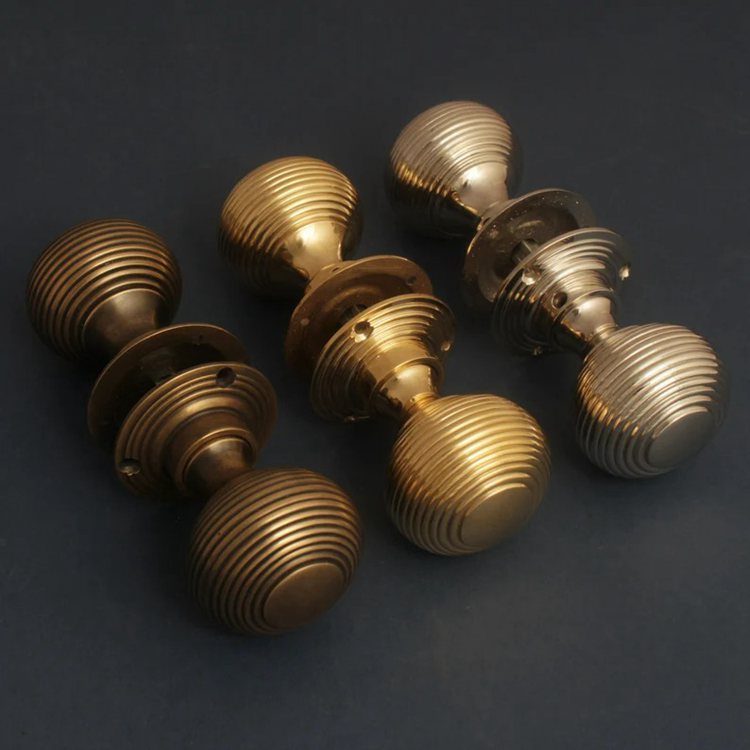
Doorknobs were made to be functional rather than stylish throughout this period.
This indicates that any doorknobs created during or before this period were straightforward, simple, and constructed of strong metals like brass.
Victorian Era
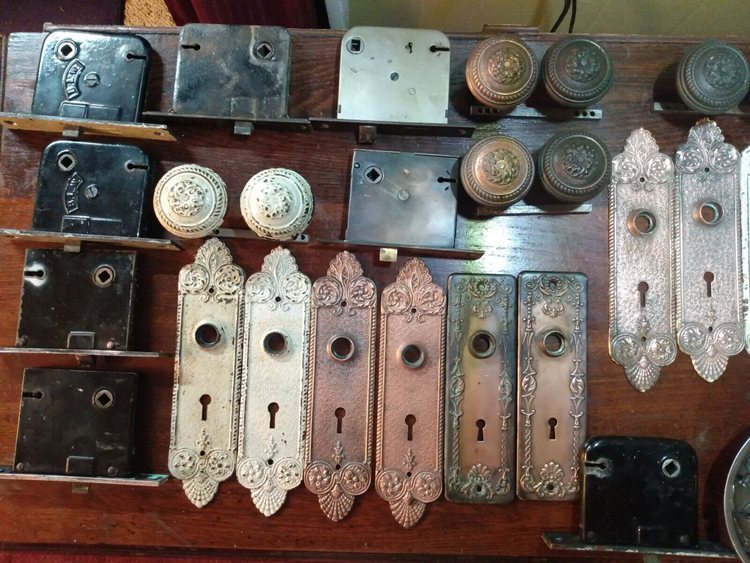
Doorknobs made during the Victorian era were flashy and extravagant, in keeping with the trend of the day.
They were regarded as a new product, and only the wealthier members of society would purchase them to decorate their front doors.
Companies would employ more costly and flexible materials like porcelain, gold, amber, and crystal to create pieces of art inside the doorknob, adding intricacy with methods like scalloping, etching, and painting.
Some doorknobs even had elaborate filigree decorations on them and were composed of several materials to enhance their elegance. A video of Victorian doorknobs may be seen here.
Edwardian Period
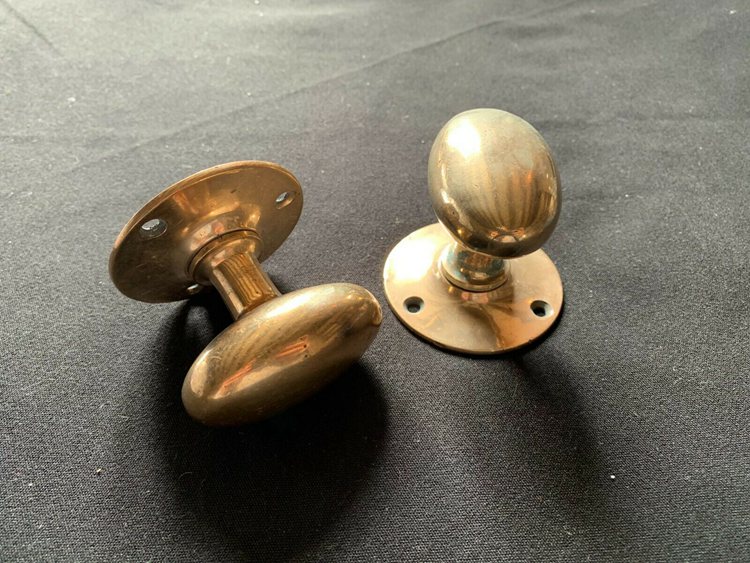
This period’s doorknobs were less ostentatious than their Victorian counterparts. Fashion trends shifted to become modest yet elegant, and this influenced house décor.
Doorknobs were still constructed of costly materials like crystal, gold, and porcelain, but the amount of detail was subtler, and the motifs on them grew more subdued.
World War I
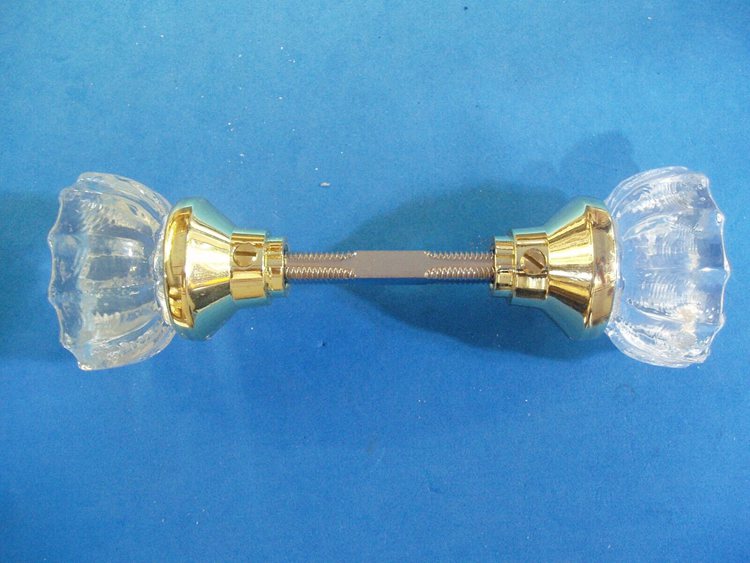
The outbreak of World War I increased the popularity of glass knobs because all spare metal was diverted to the war effort. Steel was much too valuable to be squandered on doorknobs.
These glass doorknobs were remarkably strong, and some of them have remained quite unscathed to be purchased today.
Antique Doorknob Shapes
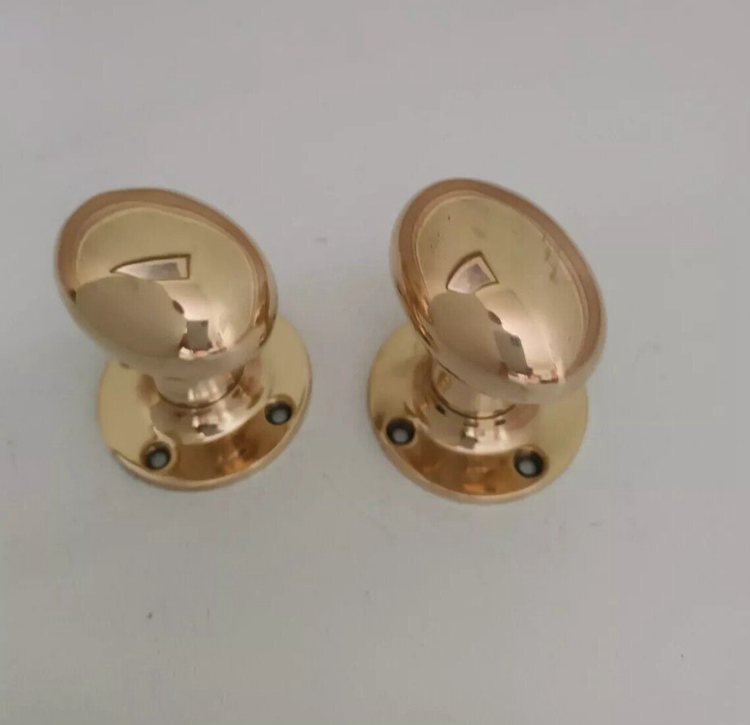
While not all antique doorknobs are precisely round, they all have a rounded form and fit comfortably in the palm of your hand.
Some of the earliest antique doorknobs are rather tiny and have a lengthy metal rod attached to the end.
Historically, this rod allowed people to insert the knob into the mortise lock mechanism and turn it, which was a huge advancement in the history of security and safety.
As a result, many of the ancient doorknobs you’ll see haphazardly piled in antique store bins will have these lengthy rods connected.
- Furthermore, design elements like the rods might help you determine where and when your antique doorknob was made:
- Between the 1820s and the 1850s, pressed glass knobs were fashionable.
- The cut glass was fashionable from the 1860s until the 1910s.
- From roughly 1885 to 1910, wooden knobs were popular.
- In the 1850s, imported chinaware knobs were first utilized.
- When cast metal became readily accessible in the mid-1840s, doorknobs were immediately made with it.
- In 1870, a compression casting technology enabled Victorians to have the intricate casting typical of their domestic design.
Doorknobs: Commercial vs. Residential
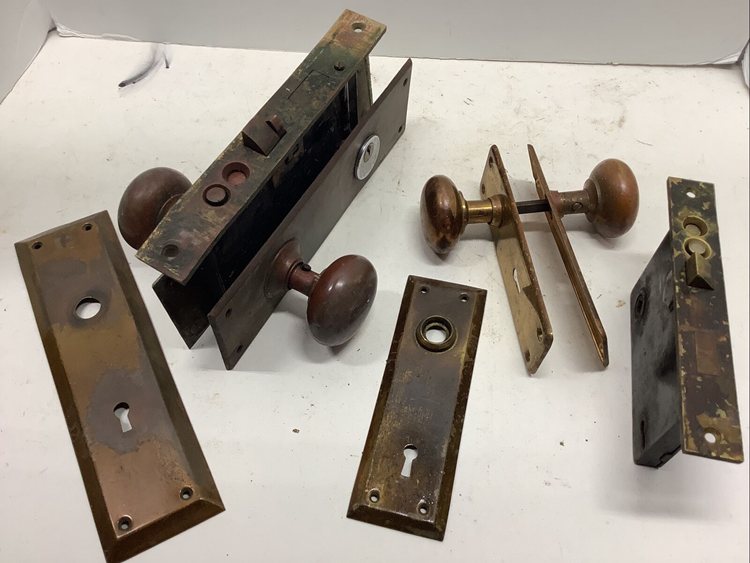
Identifying ancient doorknobs requires establishing what sort of structure the doorknob was designed to be used in.
Commercial properties were more likely to have personalized doorknobs, such as those with corporate monograms or logos imprinted on their faces.
The St. Nicholas Hotel, for example, which was erected during the Gilded Age, features doorknobs etched with its initials and complemented by a Celtic knot pattern.
Similarly, the socially affluent could purchase magnificent doorknobs adorned with precious metals and creativity to complement their lavish mansions.
Values of Antique Doorknobs
Genuine antique doorknobs may be surprisingly pricey, especially because they’re frequently utilized to preserve ancient buildings and dwellings.
In general, the value of an antique doorknob is heavily reliant on its style, the maker, the materials used to make it, and the period in which it was constructed.
In general, the value of an antique doorknob might range from $10 to $200.
Replacing Modern Doorknobs With Antique
Similarly, replacing a door’s present knob with an antique style is perfectly conceivable. However, you should not place it on your primary door.
Repeated usage with little care will gradually degrade antiquity.
You should begin by removing the door’s contemporary hardware. Attach some matching hardware to hold the knob.
The proposed list contains the following items: tube latch, strike plate, faceplate, and a plastic spacer.
Take enough measurements to guarantee optimum alignment precision. Using the essential components, install the doorknob in the introduced slot. Consult an expert, however, to discover the standards needed to satisfy the door requirements.
You may look for antique doorknob installation materials online. However, not every antique is ready to be incorporated into a modern-day door design. You should also evaluate the current door quality to avoid any damage.
Antique Doorknob Valuation
A thorough understanding of valuation is required whether you wish to buy or sell antiques. However, determining the actual worth of the doorknob needs a thorough inspection. The following tactics will undoubtedly assist you in estimating market demand.
- Genuine antique doorknobs can have a hefty price tag. Many antique houses have certain knob designs to hold the real décor.
However, not every piece will be exceedingly expensive.
- Knowing the value is still critical for every client. Without the knowledge, you can’t even put a subtle bid or bargain.
Scams/frauds may also find a method to fool you with comfort.
- Taking notes about your genuine antiques should be the first step in the assessment process.
Examine each argument for any specific specifications for justification. Take photos from every angle again to understand the color impact.
- You should be able to avoid an unclear valuation by using a direct evaluation service.
Sending the images together with their information might provide positive results. Several online assessments are currently accessible for evaluation.
- The cost might range from as little as $10 to as much as $200. Similarly, several interconnected facts directly contribute to value.
You should pay attention to its style, materials, time, and maker.
- However, many collectors prefer Victorian doorknobs to alternative possibilities. The desired design is more expensive because of the differences in decorating.
Despite the plethora of vintage knobs, it might cost you a fortune.
- A wide range of buying alternatives is made possible by good availability. You can also find high-quality designs at local vintage shops. Nonetheless, internet platforms should serve in your search for the doorknob.
Look into well-known platforms to see what’s accessible. Examining the various possibilities should provide you with basic concepts. Of course, attempt to determine the tags from local antique sellers.
Start with Amazon, eBay, Etsy, House of Antique Hardware, or Olde Good Things. Keep yourself up to date on current searches, sales, newcomers, and extra resources.
Examine the pricing differences between mediums. In reality, practically every antique has unique pricing on numerous platforms. Don’t pass up live online auctions to hone your skills.
How To Identify A Doorknob Replica
However, you must distinguish between replicas and originals to prevent making a false purchase.
When it comes to antiques, you must understand the distinguishing features that distinguish the originals. And the specialists gathered vital information on the issue.
- The surrounding edge will keep a straight edge with no bends. Over time, repeated use should bend the edges more than forced rotation.
There will be a noticeable gap between the knob plate and the door surface.
- And the bulging section should seem loose enough to catch your eye. With each contact, your hand will feel the difference.
Replicated doorknobs will start a consistent fit without causing surface loosening.
- Similarly, the connecting part should show indicators of future degradation. In the meanwhile, you must examine the material quality.
Antiques will almost always have some rust, corrosion, or fractures on the surface.
- To win the antiquity, don’t forget to wear a similar outfit. Its identification is likewise concerned with the prospect of authenticity.
Random scratches, warped paintwork, and a sloppy backdrop should suffice.
Conclusion
To summarise, to recognize an antique doorknob, look attentively at the form of the knob to ascertain what sort of lock it has.
Determine the era it was most likely constructed in by researching the design and materials used to create it.
If it is more elaborate, it is more likely from the Victorian era. It is from another era if it is practical and has a long metal rod.
Determine if it was a residential or commercial doorknob by inspecting the design. If it appears professional and has some type of business mark, such as initials, it is most likely commercial.
If you’re still not sure, check for comparable doorknobs online and read the descriptions, or take it to a local antique shop to be assessed.
We hope you found this information useful in your quest to determine whether your doorknob is a genuine antique.
If you have any questions concerning anything you have read today, please let us know and we will respond as soon as possible!





![Where To Sell Antique Furniture In 2022 [Ultimate Guide]](https://www.jacquelinestallone.com/wp-content/uploads/2022/09/Etsy-Your-Place-To-Buy-And-Sell-All-Things-Handmade-600x450.jpg)


